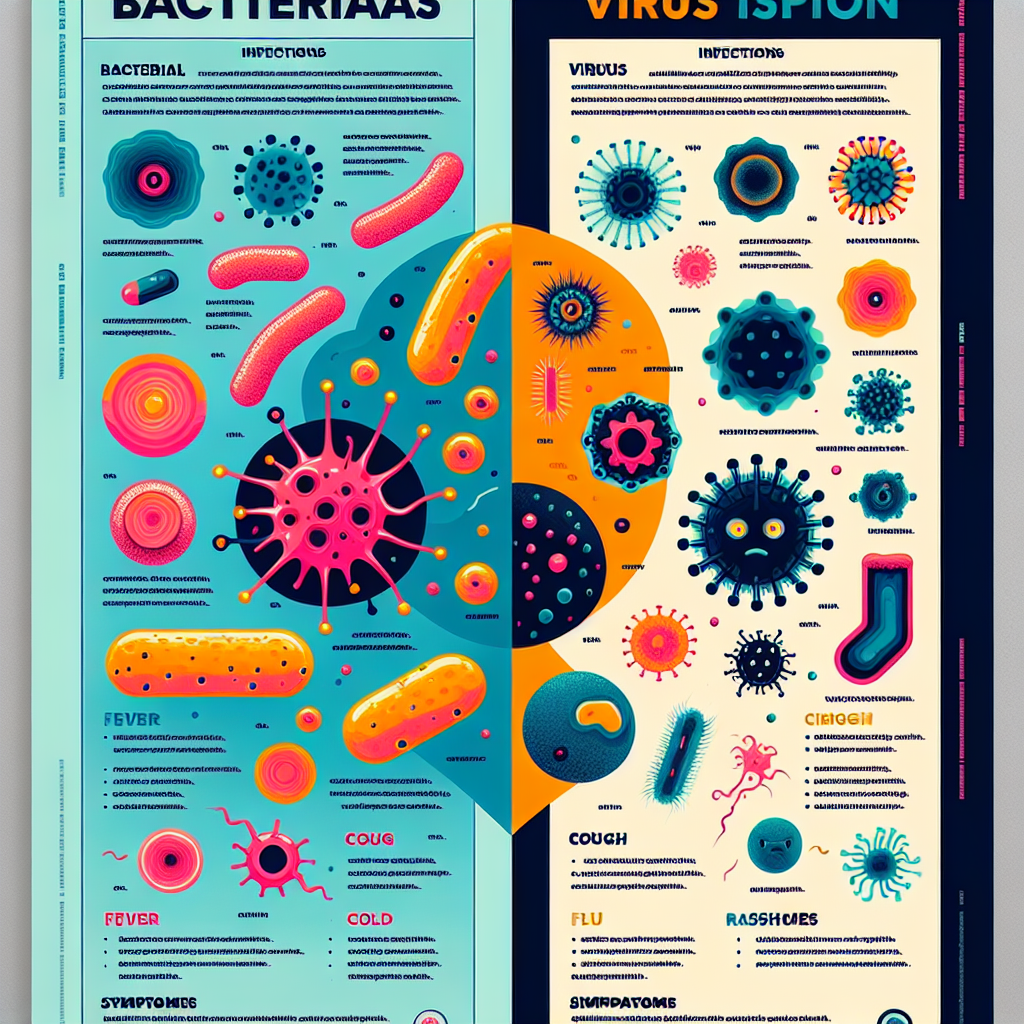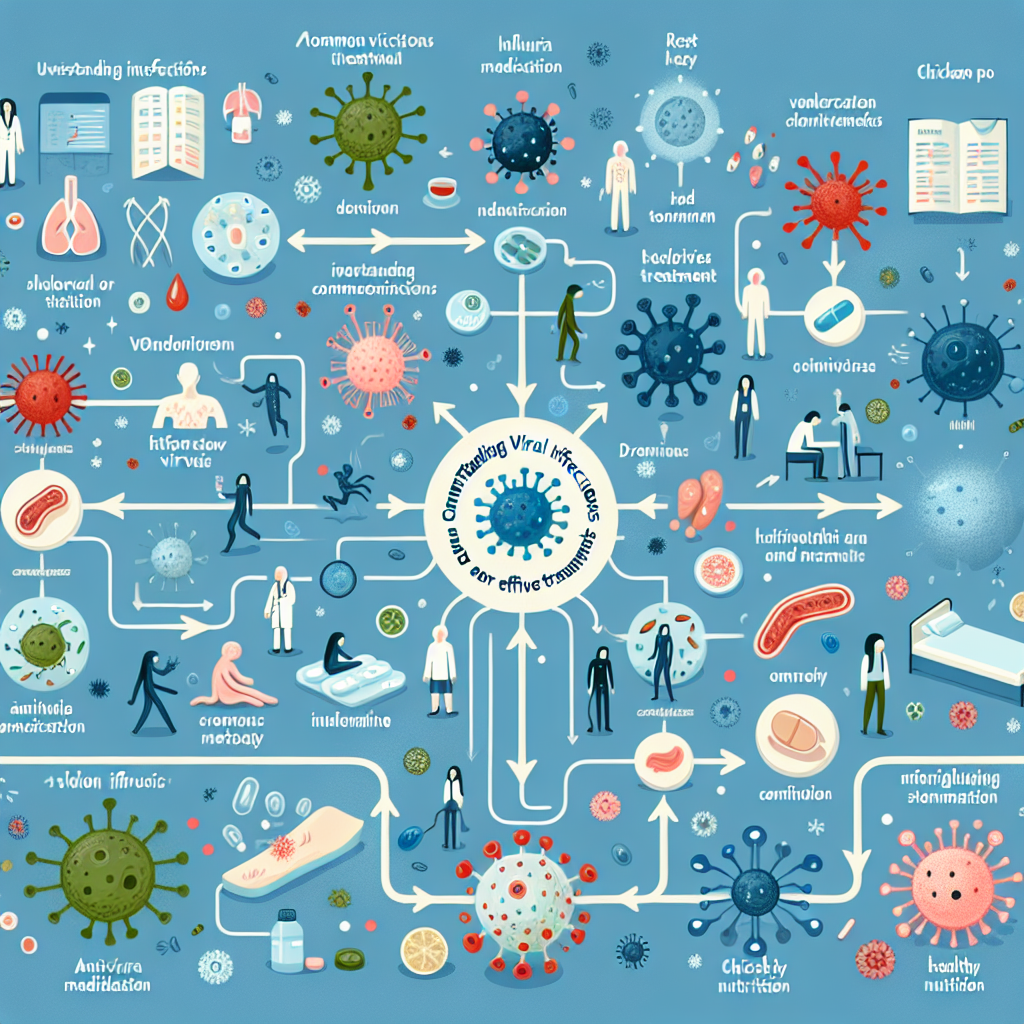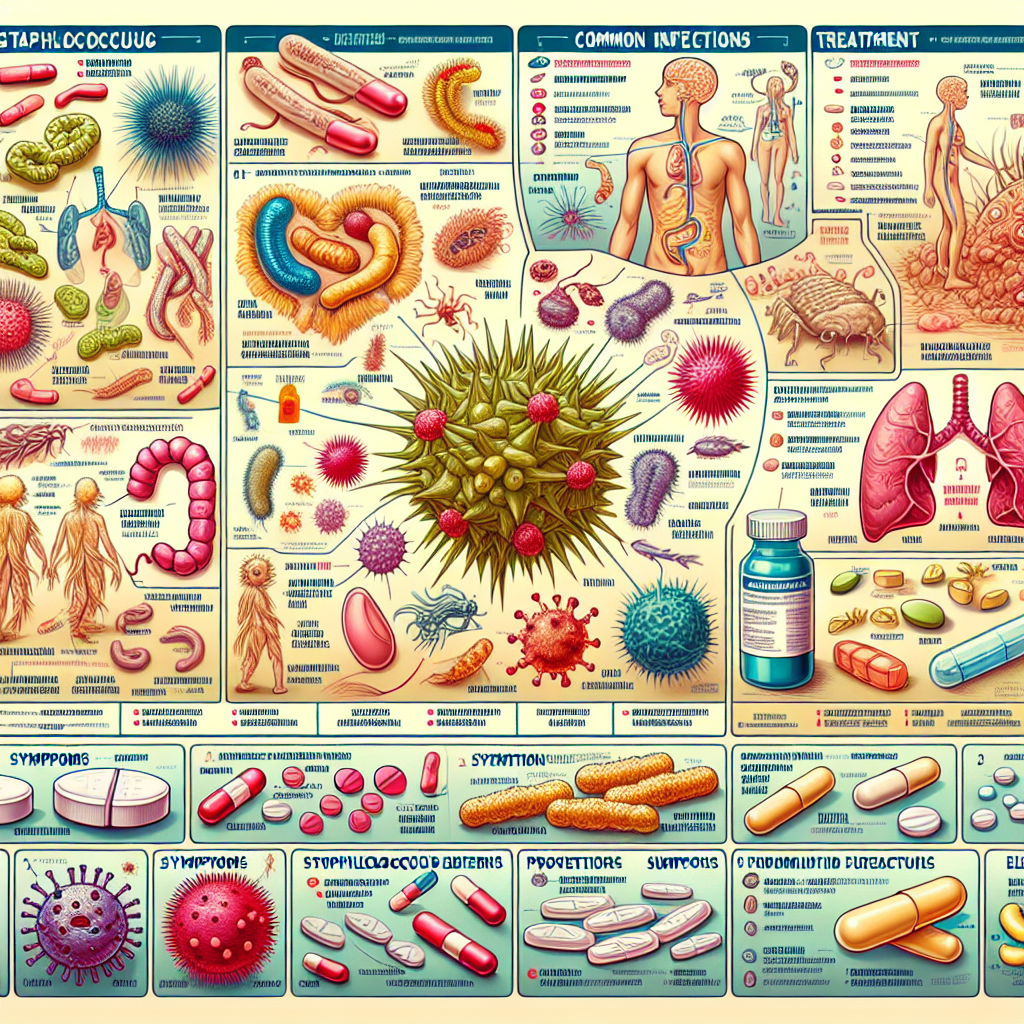Navigating the murky waters of illness can be daunting, especially when grappling with the symptoms of bacterial vs. viral infections. Understanding whether you’re dealing with a bacterial or viral infection is crucial not only for effective treatment but also for preventing further complications. If you’ve ever wondered why some illnesses linger while others resolve quickly, or why certain medications work for one type of infection but not another, this article will provide you with the insights you need. By uncovering the distinct characteristics of these infections, you can empower yourself with the knowledge to make informed health decisions and communicate better with healthcare providers.
Understanding the Key Differences Between Bacterial and Viral Infections
Bacterial and viral infections are fundamentally different in their structure and behavior, which directly affects how they interact with the human body. Bacteria are single-celled organisms that can thrive in various environments, including inside the human body. They can reproduce independently and often lead to infections by invading tissues and producing harmful toxins. Viruses, on the other hand, are much smaller entities that require a host cell to reproduce. They hijack the host’s cellular machinery to replicate, often resulting in cell damage and inflammation.
One of the most significant distinctions lies in treatment approaches. Bacterial infections can typically be treated with antibiotics, which are designed to kill bacteria or inhibit their growth. In contrast, antibiotics are ineffective against viruses, necessitating alternative strategies such as antivirals or supportive care to allow the immune system to combat the infection. This critical difference is vital for healthcare professionals and patients alike, as inappropriate use of antibiotics can contribute to antibiotic resistance, a growing global health issue.
The symptoms experienced during bacterial and viral infections can also vary widely, lending further complexity to diagnosis. While both types of infections may cause fever, fatigue, and malaise, bacterial infections often result in more localized symptoms such as pus formation or specific pain in affected areas. Viral infections, conversely, tend to present with systemic symptoms that affect multiple body systems, such as respiratory or gastrointestinal distress. Understanding these nuances is essential for recognizing the underlying cause of an illness and seeking appropriate medical attention.
Identifying Symptoms: A Guide to Accurate Diagnosis and Treatment
Recognizing the symptoms of bacterial vs. viral infections is key to addressing your health concerns effectively. An acute bacterial infection often presents with sudden onset symptoms, such as severe pain, localized swelling, and fever that feels more intense. For example, strep throat, a bacterial infection, often leads to a sudden sore throat accompanied by fever and swollen lymph nodes. Other tell-tale signs include the presence of a rash that develops quickly or the formation of abscesses in infected areas.
On the other hand, viral infections frequently manifest with a more gradual onset and systemic symptoms that may include a runny nose, cough, and general malaise. Influenza is a classic example, often characterized by a sudden high fever, body aches, fatigue, and respiratory symptoms that may last for several days to weeks. Understanding these distinctions allows individuals to assess their symptoms more accurately and seek timely medical advice, especially in cases where symptoms worsen or do not improve.
When it comes to treatment, recognizing whether an infection is bacterial or viral can save time and prevent unnecessary complications. For bacterial infections, prompt treatment with antibiotics can significantly shorten the duration of illness and reduce the risk of severe health issues. Conversely, if a viral infection is suspected, rest, hydration, and over-the-counter medications may be the best course of action. In some cases, healthcare providers may recommend antiviral medications for specific viral infections, such as influenza or herpes, which can help mitigate symptoms and promote recovery.
In conclusion, distinguishing between bacterial and viral infections is more than just an academic exercise; it’s a critical skill that can impact your health and well-being. By understanding the key differences in symptoms, treatment options, and the underlying mechanisms of these infections, you can take proactive steps in managing your health. Always remember that while self-assessment can provide valuable insights, seeking professional medical advice is essential for an accurate diagnosis and effective treatment. Empower yourself with this knowledge, and don’t hesitate to reach out to healthcare providers when in doubt. Your health is worth it, and informed decisions are your best ally in the quest for wellness.
Essential Strategies for Preventing Viral Infections EffectivelyEssential Strategies for Preventing Bacterial InfectionsUnderstanding the Mechanisms of Virus and Bacteria TransmissionRelevant LinkRelevant LinkRelevant LinkUnderstanding Lower Back Pain Linked to COVID-19: Insights and ManagementUnderstanding COVID-19: Navigating Loss of Appetite ChallengesUnderstanding COVID Laryngitis: Symptoms, Causes, and TreatmentRelevant LinkRelevant LinkRelevant Link


